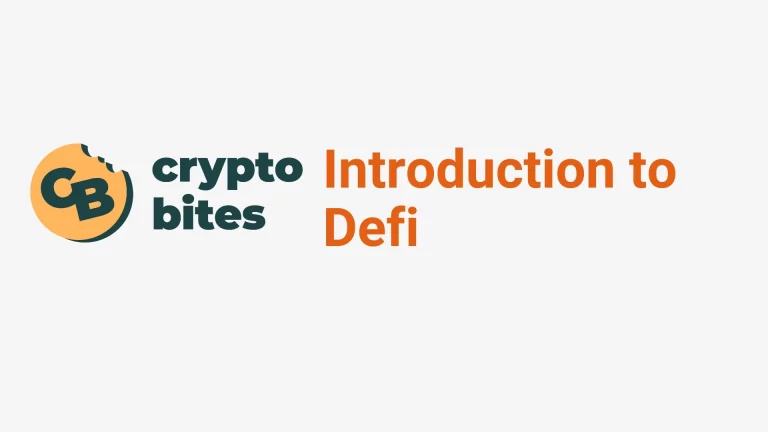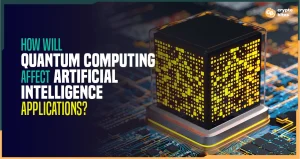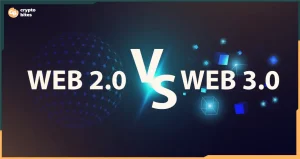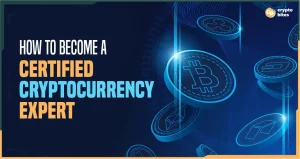
Introduction to Decentralized Finance (DeFi)
The blockchain world has developed lingo all its all. As a result, it’s not uncommon for newcomers to feel completely overwhelmed when they’re first hit with terms like DeFi, layer 2 solutions, and blockchain protocols.
Seriously. It’s enough to make you feel like a 4th grader in a college algebra course.
In the presence of blockchain wizards, it’s tempting to nod, smile, and pretend you know WTF is going on. But if you want to know what words like DeFi mean, you’ve come to the right place. We’re about to break things down in an actually understandable introduction to decentralized finance (DeFi).
What’s the Deal With DeFi?
To give a crap about how DeFi works, you first have to understand what it’s designed to do. It all goes back to banks. Yep, banks.
When you think about it, banks have always had a shitload of power. Where is most of your money right now? Probably in a bank.
Want to sign up for a credit card or take out a loan to buy a house or car? You’ll probably have to pay a giant financial institution an obscene amount of interest to do it.
Centralized banks have traditionally been the official guardians of money. They can slap you with a late fee, refuse to give you a loan, or charge you fees to use their services. And we all accept it, because what other option do we have?
DeFi aims to become that other option.
DeFi: Ain’t Nobody Got Time for Banks
Decentralized finance is basically the antithesis of everything centralized banks stand for. DeFi’s goal is to eliminate the need for banks by allowing anyone to store, control, and use their assets however they please.
Instead of a bank account, you can now sign up for a secure digital wallet to store assets like cryptocurrency. Then, if you want to make or receive a payment, you can do it in seconds without relying on a third-party bank.
Want to send money to someone halfway around the world? Go for it – without having to worry about foreign transaction fees. Want to open a business? DeFi allows merchants to accept customer payments without paying debit card processing fees.
It even lets users lend or borrow money at a rate they can negotiate.
How DeFi Uses Blockchain Technology?
Sound cool? It is. But how the hell does DeFi aim to pull off this utopian vision of financial freedom?
Okay, so this is where some big words come in. But don’t panic because we’re going to break them down too.
DeFi is convenient and secure because it’s built on the same blockchain technology that makes cryptocurrency work. DeFi protocols are usually built on blockchains like Ethereum or Avalanche because they have a function called smart contracts.
When two parties make a transaction on one of these blockchains, it’s verified by validators who make sure it’s legit.
Once the transaction is completed, a digital record (like a receipt) is encrypted into a “block” for all time. New transactions are recorded in additional blocks, which are then “chained” to the ones before them. Hence the name blockchain.
All these blocks are then recorded in a vast distributed financial database. This database contains a record of all transactions ever made on the blockchain. Once a block is added, it can’t be changed in any way without affecting all the blocks that follow it. For this reason, a blockchain is nearly impossible to hack or alter.
DeFi Governance
DeFi governance refers to the decentralized decision-making process within a decentralized finance (DeFi) ecosystem. In these systems, various stakeholders, such as users, token holders, and developers, have a say in proposing, discussing, and implementing changes to the protocol.
Governance in DeFi typically involves voting on proposals that can affect aspects like protocol upgrades, changes in parameters, introducing new features, or even the allocation of funds from a treasury.
Just as in a town hall meeting, where residents gather to discuss and vote on community matters, in DeFi governance, token holders come together virtually to propose, debate, and vote on changes to the decentralized financial system.
DeFi governance, however, isn’t only about voting, there’s a lot more to it. Check out this guide If you wish to learn more about DeFi governance and how this intricate process works within DeFi.
What is TVL in DeFi?
TVL stands for Total Value Locked, a crucial metric in the decentralized finance (DeFi) space. It represents the total value of assets locked in a particular DeFi protocol or platform.
This metric includes assets such as tokens, cryptocurrencies, or other forms of value that users deposit or “lock” into the protocol for various purposes like lending, borrowing, providing liquidity, and more.
TVL is a key indicator of the size and success of a DeFi platform and is often used to measure its growth and attractiveness to users.
How is TVL Value Calculated?
The determination of TVL involves aggregating the value of assets locked within a specific DeFi protocol or smart contract. This includes various digital assets like stablecoins, cryptocurrencies, or tokens utilized for liquidity provision or as collateral for loans.
For example, if a DeFi platform calculates its own TVL and holds $10 million in ETH, $5 million in USDT, and $2 million in other ERC-20 tokens within its smart contract, the total value locked would be $17 million.
Independent DeFi analytics tools often provide TVL data relied upon by investors. These platforms gather necessary data through web scraping techniques and APIs to compute the total value locked.
On August 28, 2023, DeFiLlama, an analysis platform, published various TVL figures:
- Lido: $13.9 billion
- MakerDAO: $5.13 billion
- Average: $4.53 billion
- JustLend: $3.36 trillion
- Uniswap: $3.33 trillion
Due to the potential volatility of cryptocurrency assets in the DeFi ecosystem, these values are subject to change on any given day.
Check out this blog to learn more about TVL and its role within DeFi.
What is a Synthetic Asset in DeFi?
Synthetic assets in DeFi are artificially created assets designed to mimic the value or behavior of other assets without necessarily holding the underlying asset. These assets are ‘synthetic’ because they derive their value from an underlying asset, index, or commodity, yet they aren’t physically owned.
It’s a pretty interesting concept, however, reading this blog will give you a more concrete understanding of synthetic assets.
The Pros and Cons of DeFi
From transaction speed and accessibility to staking and lending, DeFi has plenty going for it. But don’t cut up all your debit cards just yet.
Yeah, DeFi has loads of great potential. But it’s still an emerging technology with plenty of kinks left to work out.
While blockchains are incredibly secure, that doesn’t stop some scammers from attempting shady shenanigans. For example, some may attract buyers before executing a dreaded “rug pull.” Others may try to gain access to a user’s funds by stealing their wallet keywords.
The truth is, there is no completely foolproof financial system. However, the good news is that blockchain technology is not as anonymous as some people assume.
Remember the whole blockchain ledger we talked about above? It allows law enforcement to trace transactions to the beginning of crypto history.
Some of the more common issues with DeFi are things like scalability. The easiest way to understand this issue is by picturing way too many people all wanting to use the same checkout line or highway.
The more congested a blockchain gets, the slower and more expensive it is. But protocols like Layer 2 solutions have now been invented to help solve this issue.
Last but not least, for DeFi to really take off on a global scale, it’s going to have to be much more user-friendly. Anyone with a government ID can now sign up for a bank account online in a few minutes.
But many people’s eyes still glaze over at the mention of words like “DeFi” or “blockchain.” While more people are getting into crypto daily, history has shown that change doesn’t always happen overnight.
Okay, so the DeFi revolution may arrive at a slower pace. But at least now you’ll know WTF’s going on when it ultimately comes ahead in the future.
Sources
www.coindesk.com/learn/what-is-a-rug-pull-how-to-protect-yourself-from-getting-rugged/




